Features
For the first time, researchers from Oxford’s Departments of Physics and Materials have managed to image hybrid metal halide perovskites with atomic-scale resolution providing new insights into these wonder-materials. A paper published in Science shares the groups’ findings about the materials’ remarkable self-healing powers; the findings further our critical understanding of how such perovskites work and are an essential step closer to the commercial production of perovskite solar cells.
Perovskites hold the promise of a new dawn for photovoltaic and optoelectronic applications – solar cells and light-emitting devices
Professor Laura Herz from Oxford’s Department of Physics and corresponding author, says: ‘Perovskites hold the promise of a new dawn for photovoltaic and optoelectronic applications – solar cells and light-emitting devices – but there is still much we need to know about them. We need to fundamentally understand these materials in order to fully harness their power. Up until now, researchers essentially had to guess how processing affected the material and so, in turn, the solar cell performance; our work will allow the field to directly determine how different fabrication routes affect the structure.’
Remarkably rapid recovery
The materials are very soft and therefore electron-beam sensitive however, using specialist electron microscopy imaging, the team were able to observe the perovskite structure at atomic resolution. They found that prolonged electron irradiation degraded the structure as expected but that an intermediate structure formed that allowed for the material’s rapid recovery. Further observations of the atomic arrangement within the hybrid perovskite films showed that small inclusions of lead iodide (which is used as an ingredient) form a surprisingly coherent transition boundary that nearly perfectly follows the surrounding perovskite structure and orientation. The observation suggests that lead iodide may seed perovskite growth and explains why an excess of lead iodide tends not to impede solar cell performance. Studying the material at this atomic level revealed essential information about the nature of the structure’s boundaries, defects and decomposition pathways.
Dr Mathias Rothmann, from Oxford’s Department of Physics and lead author, comments: ‘We have been able to study photoactive perovskite thin films with atomic resolution in their native thin-film state, which is what you find in a solar cell device. We were able to observe a range of different boundaries between the crystal domains in the film, which are very important for solar cell performance but not very well understood.
'We observed different types of defects that haven't been described for this material before, as well as the inclusion of a secondary material – all of which can potentially have a significant impact on the overall performance of the solar cells, but which are impossible to study without the level of resolution we have managed to get. This detailed level of understanding has been essential for the rise of silicon-based solar cells, and we can therefore only begin to imagine the impact it will have on the future of perovskite solar cells.’
Perovskites for commercial solar cells
Professor Herz concludes: ‘Our findings have revealed several, possibly unique, mechanisms that underpin the remarkable performance of this technologically important class of hybrid lead halide perovskites. The highly adaptive nature of the perovskite structure accounts for its exceptional regenerative properties and our atomic-resolution observations of interfaces within the material will contribute significantly to being able to eliminate defects and optimise interfaces. This is exactly the exciting kind of information we need to make perovskites ready for commercial solar cells.’
Read ‘Atomic-scale microstructure of metal halide perovskite’, in Science, Vol 370 Iss 6516.
COVID-19 hit England’s social care sector like an ‘earthquake’, according to Oxford Professor of Sociology and Social Policy, Mary Daly, and revealed a sector in crisis and a worrying attitude towards older and vulnerable people.
In a recent article, COVID‐19 and care homes in England: What happened and why?, Professor Daly maintains the treatment of care homes during the first months of the pandemic is ‘fast generating the sense of a scandal’. While the NHS was ‘front and centre of the national response’, Professor Daly says, ‘Care homes were poorly targeted and in many senses neglected until late in the pandemic when a response was unavoidable.’
In the report, Professor Daly exposes ‘erroneous policy choices’ and ‘many mistakes’. But, she says, the reasons for the crisis are ‘more complex’ and fundamental – a mixture of structural and politico/socio cultural factors.
In the report, Professor Daly exposes ‘erroneous policy choices’ and ‘many mistakes’. But, she says, the reasons for the crisis are ‘more complex’ and fundamental
Social care struggles to be seen as a priority, she says, exacerbated by the separation of social care and the health system which makes governance and supply routes difficult, especially in a pandemic. There have also been ‘years of austerity and resource cutting’ which have depleted the ability of local authorities to bolster social care.
In her report, Professor Daly directly criticises the long-term lack of political support for the sector and, in terms of COVID-19, the government’s calculation that care homes might be seen as less important than the NHS and, as a result, policy errors less likely to ‘hurt’ them than an NHS blunder. But, Professor Daly maintains, ‘The weak regulatory tradition of the sector also contributes to explaining the inadequacy of the response. Care homes and social care in general are far down the chain of public policy and the majority are market providers which see relatively little regulation.’
Care homes and social care in general are far down the chain of public policy and the majority are market providers which see relatively little regulation
There have been positives, she says, ‘Initiatives are coming forward to integrate health and social care.’
And, Professor Daly says, the Government did allocate some £600 million to the sector in mid-May and families, prevented from seeing their relatives, have mobilised and made themselves heard
But, talking to Arts blog about the crisis, Professor Daly says, ‘It has revealed fundamental flaws in the sector. There are the problems of funding but there is also the governance system [regulation] and inadequacies in homes.’
Professor Daly maintains, ‘Too few care homes are in the top tier. Very few are ‘Outstanding’ homes.’
Under the care regulation system, governed by the Care Quality Commission, homes are ranked as ‘Outstanding’, ‘Good’, ‘Requires Improvement’ and ‘Inadequate’. Currently, on this scale 4% of homes for older people in England are ‘Outstanding’, while more than 2,000 care homes, one in five, fall into the substandard categories. The system was intended to mirror the Ofsted system of school inspections, but some 20% of state secondary schools are currently ‘Outstanding’ with 14% substandard.
‘Social care is a very difficult area for any government. It is a political hot potato [and no government has wanted to deal with it],’ Professor Daly adds. ‘Care homes needed to be protected before Covid, it was a signal mistake.’
It worries me what all this says about our valuing of older and vulnerable people. I fear they are seen as acceptable casualties
But, she emphasises, ‘It worries me what all this says about our valuing of older and vulnerable people. I fear they are seen as acceptable casualties.’
Professor Daly warns that there is a problematic fault line within the sector, ‘Privatisation in care means that there is a very great reliance on market provision in social care...local authorities got out of provision and now care home owners are responsible for caring for our older and vulnerable people....when care is about profit we need to wake up.’
In concluding her report, Professor Daly calls for, ‘A new model of care for older adults. The large and diverse network of independent providers does not look like a resilient form of provision and is likely to have become even less resilient following the pandemic.
‘Ultimately, the country has to answer the question of what is an acceptable way of caring for its older people and view the pandemic outcome as associated not just with short‐term failures of policy and political leadership but a much deeper undervaluing of the came home sector, the activity of caring and those who require care.’
There is a very great reliance on market provision...care home owners are responsible for caring for our older and vulnerable people....when care is about profit we need to wake up
She insists, ‘Long‐term care policy has to become a meaningful part of the British welfare state in which the rights and entitlements of those involved are given a central place, unseating the far more dominant risk, exigency and need perspectives.’
 Save the Kakapo
Save the Kakapo
Mobile games have never been more popular. Some now count their number of players not in the thousands or millions but in the billions, given them a reach that few other channels can compete with. But most of these games have as the main goal to generate revenue. What if we could harness the power of games for something more meaningful?
That is why I have been working with On The EDGE Conservation (OTEC), with game developer Quantum Shift Studios and publisher Playstack to launch ‘Kakapo Run’. This is the first in a series of games to gather support for Evolutionarily Distinct and Globally Endangered (EDGE) species, creatures that have no close relatives and thus represent a big slice of our natural heritage, which are in real risk of disappearing forever. The game is available for download on App Store and Google Play Store, and has no adverts or in-app purchases.
Only around 200 kakapos remain in New Zealand today – invasive mammalian predators, such as the stoat, brought to the islands by European settlers, have wiped out this Critically Endangered species on the mainland. These flightless, nocturnal parrots exist only on heavily controlled island conservation areas.
Only around 200 kakapos remain in New Zealand today
In the game, players must get the kakapo to safety to Sanctuary Island. Each level starts with the cry of the Haast’s Eagle, a huge raptor that used to be the main natural predator for kakapo, but is now extinct. The kakapo freezes in place, a behavioural response to avoid being seen by predators. Soon however, a cloud of dust rises in the horizon, and the kakapo must run for its life. To stay alive, players have not only to dodge the different obstacles on their path but also to knock out, or evade, predators like rats and stoats, brought to New Zealand by European settlers and which now alongside dogs and cats are key predators for the kakapo and its chicks.
We wanted to use this “infinite runner” style gameplay to showcase how species like the kakapo have to continuously dodge a myriad of threats to stay alive. That is why conservation actions to help this and other EDGE species are so crucial.
We wanted to use this “infinite runner” style gameplay to showcase how species like the kakapo have to continuously dodge a myriad of threats to stay alive
The game is, of course, heavily inspired in the unique and varied natural landscapes of New Zealand, the kakapo’s only home: from dense forests to idyllic coastlines; players can even run through the city dodging trams and traffic. It also features the rumi fruit, a red berry-like fruit that is one of the kakapo’s favourite foods.
But does the game make a difference? Initial research revealed that playing the game has important impacts on the players support for environmental conservation. In an experiment, we compared 100 people who played Kakapo Run with 100 people who played Subway Surfers, one of the world most popular mobile game. Our results showed not only that players knowledge increased while playing the game but also that they increasingly perceived their actions as having an impact on the environment and were more likely to volunteer for a conservation organization.
These are very encouraging results and a first for a game focused on wildlife conservation. Our goal is now to get this game in as many mobile phones as possible, not only in New Zealand, but across the globe. Could we make Kakapo Run the next Candy Crush or Subway Surfers?
We are already working on our next game, which will feature another weird and wonderful EDGE species… But for now, we want to hear what the world thinks of our latest release. Go on, have a play!
Diogo Veríssimo, PhD, is a Research Fellow, University of Oxford and Director of Conservation Marketing, On the Edge Conservation
In a wood-panelled office with an enviable view of Oxford’s most iconic sights, Richard Ovenden might seem an unlikely cyber campaigner. But the latest holder of the historic post of Bodley's Librarian (chief librarian of the Bodleian) fears ‘knowledge is under attack’ from the impact of the online world on public discourse and decision-making. And preserving such knowledge is very much Professor Ovenden’s business.
Listen to Richard Ovenden's frank interview here:
In his recent work, Burning the Books: A History of Knowledge Under Attack, he has taken to the metaphorical barricades over the challenges of ephemeral digital discourse to the work of libraries and archives. But his concerns go far wider – and he warns of the impact on society more broadly of digital communication. One aspect in particular is a current concern: when communications between Cabinet Ministers and civil servants and special advisers take place on digital platforms, with end-to-end encryption, where, he fears, will the checks and balances be?
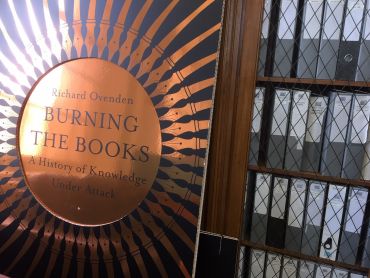 Burning the Books marketing material leaning against book shelf in Richard Ovenden's office
Burning the Books marketing material leaning against book shelf in Richard Ovenden's officeWhat will it mean for accountability, when public figures act with a sense of impunity given by secret digital platforms? Will the only sources available to future historians be self-serving memoirs?
As Bodley's Librarian, the 25th in the library’s 420 years, he takes a long view of such things. Tech may be a very modern threat, but Richard sees it as the latest in a long line of attacks on knowledge. He notes this included the destruction of Oxford’s University library at the time of the Protestant Reformation, which led to the creation of the Bodleian - an ‘Ark’ to save knowledge from the ravages of the era.
To restore accountability – and to ensure libraries such as the Bodleian can carry out their historic record-keeping role – Richard argues new measures are urgently needed to preserve communications, many of which are currently only available to big tech firms. It is a massive task. We are writing more than ever – with email and social media often replacing conversation and more formal correspondence.
Richard argues new measures are urgently needed to preserve communications, many of which are currently only available to big tech firms. It is a massive task. We are writing more than ever
Not everything needs to be kept, though. Libraries are already maintaining huge amounts of data, but many records are being lost – because they are undertaken on platforms controlled by the commercial tech industry. Considerable extra resources and a combined effort from libraries and archivists will be needed, and Richard has mooted a ‘memory tax’ on the tech firms, to pay for it. But, it is essential if we are to preserve knowledge that is now created and managed on digital platforms. Many of these are currently set to be lost to posterity – along with all those family photos on smart phones.
It will not be possible, or desirable, to keep everything, says Richard. But, in addition to communications between government officials, there is a real purpose in maintaining samples of communication on social media platforms. Just as the public records today include fascinating insights into the lives of people in the past, because of chance remarks on the margins of official documents, social media provides insight into 21st century life – warts and all.
Richard Ovenden was in conversation with Sarah Whitebloom; audio recorded and edited by Ruth Abrahams
What’s the rudest thing you can say to an award-winning translator? Probably, ‘What’s the point, I’ve got Google Translate?’ It’s got to be in the top 10. As an opening gambit, it is unlikely to impress someone who spends hours each day, carefully reworking a text for an English-speaking audience. But translators are nothing if not patient and indulgent.
Indeed, despite the advance of technology, translators are now (belatedly) receiving greater attention in their own right. The International Booker prize now recognises the ‘vital work’ of the translator, dividing cash prizes between the author and the translator. But the Oxford-Weidenfeld Prize for translation is in its 21st year – and recently announced a strong and diverse 2020 eight-book short list of European language literary translations - from German to Greek, Slovene and Finnish into English.
What’s the rudest thing you can say to an award-winning translator? Probably, ‘What’s the point, I’ve got Google Translate?’ It’s got to be in the top 10.
‘Google Translate might be becoming more accurate and efficient,’ says Dr Eleni Philippou, of Oxford’s Comparative Criticism and Translation research centre. ‘But translation has a human element to it, which cannot be replaced by a machine.’ She adds, ‘A machine (at least for now) cannot discern tone, nuance or humour. Jane Austen would fall flat, with a machine translation, because it would fail to catch her ironic wit. You need a human translator for that.’
Previously, translations would find their way into tourist shops overseas, hoping to capture the interest of travellers. But, increasingly, translations are being published further afield. In reality, translation is going through something of a renaissance, with writers such as Elena Ferrante, author of the ‘Neapolitan Quartet’, and Han Kang, who won the 2016 Man Booker prize for The Vegetarian, becoming global literary sensations. Translation is a very small part of the British book market, though, just some 3-3.5%, but translations have featured on best seller lists in the last few years and publishers cannot afford entirely to ignore them.
Jane Austen would fall flat, with a machine translation, because it would fail to catch her ironic wit
No-one knows this better than Dr Philippou, who has administered the Oxford-Weidenfeld Prize for almost five years, and has seen a range of translation submissions from publishers, both big and small. ‘Over the years, I’ve enjoyed cataloguing literary texts from the most commonly translated European languages – Spanish, French, German, Italian, and Russian – in addition to books from less-commonly translated languages, such as Modern Greek. It has also been interesting to track fashions or trends when it comes to translations. For example, Nordic Noir is currently in vogue: it has been popularised by various Scandinavian television series.’
It’s a bit like writing a book from scratch...there is no way a computer could do that. It’s very personal and it is necessary to match the tone of the original...translators have a significant role
Creativity is very much part of the translation process, according to Oxford Classics graduate, Joshua Barley. With David Connolly, he co-translated a poetry collection from leading Greek author Michális Ganás’s, A Greek Ballad. Joshua, who has lived in Greece for eight years, was delighted to be among the 2020 Oxford-Weidenfeld short list.
‘It’s a bit like writing a book from scratch...there is no way a computer could do that. It’s very personal and it is necessary to match the tone of the original...translators have a significant role,’ he says. ‘It’s really rewarding.’
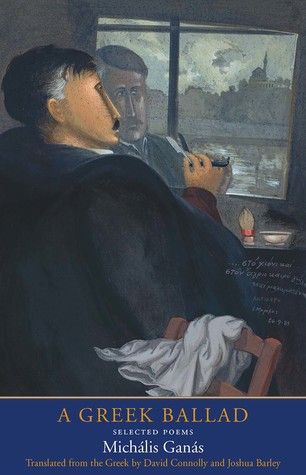
The Prize’s judges said of their translation, ‘It is a jointly translatorly and poetic tour de force that proves to be a mesmerising exploration of genres and styles. Connolly and Barley’s pioneering enterprise responds effortlessly to the range of challenges Ganás’s oeuvre presents for the translator: their renditions are inventive and formally exact when needed and stripped back when the original is elegantly succinct.’
Like Joshua, the winner of this year’s Prize, David Hackston, lives abroad and brings the literature of his adopted home to an English-speaking audience. A foreign languages graduate of UCL, he has lived in Finland for 20 years. Finnish was a minor subject for him, but David now finds himself a Finnish translator.
‘There are a lot of people translating from Swedish...Finnish is a smaller field,' he muses. ‘I'm glad my degree [in Scandinavian languages] didn’t go to waste.
You need to create a context and a voice. A passing comment might just need one extra word to make it understandable to a reader in another language. The words are only the starting point
His translation, Crossing, by Pajtim Statovci was highly-praised by the judges, ‘David Hackston’s impeccable translation never falters in the voices he gives to the characters. He switches effortlessly from Bujar’s father’s idiom of legends and fairytales to the obsessive, runaway sentences of the protagonist’s inner reflections. This is a heartbreaking novel that addresses some of the most urgent questions we face, but refuses to give any simple answers.
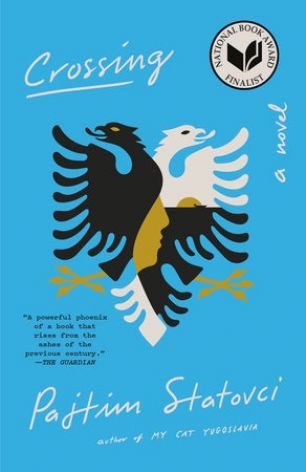
The judges’ praise points to David’s attention to detail; he does not underestimate the translator’s art, ‘You need to create a context and a voice. A passing comment might just need one extra word to make it understandable to a reader in another language. The words are only the starting point.’addresses some of the most urgent questions we face, but refuses to give us any simple answers.’
Does he choose the books he translates? Not really but, he says, publishers do take advice.
‘You have to know what will work in English. It must have universal themes. It doesn’t matter where it is set, if the story is relatable,’ he says. ‘Publishers may have never translated a Finnish book before, so they have listen to people they trust. Translators have read more literature in their respective working languages than publishers have, and our perspectives can be valuable.’
Of course, Pushkin Press, which published Crossing, was founded with the explicit aim of bringing literature in translation to the UK, and could not be happier about the win. As for David, he was delighted to win the prize – and also to translate Crossing. David says, 'It was a novel in Finnish, about events in the Balkans [where he has travelled extensively] and with LGBT themes. It was the jackpot.’
- ‹ previous
- 31 of 248
- next ›

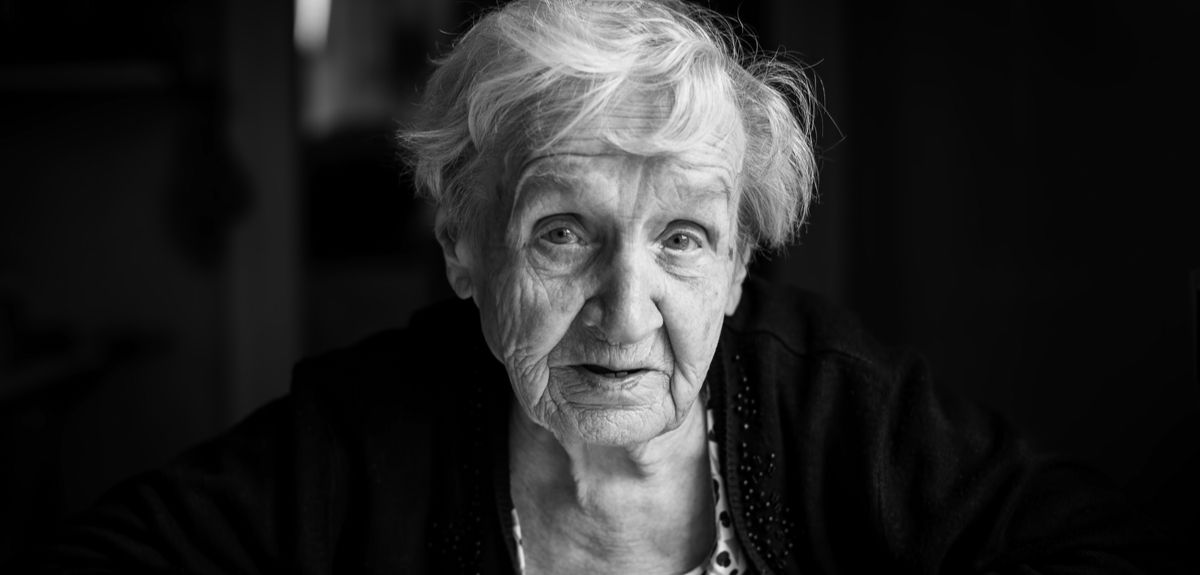

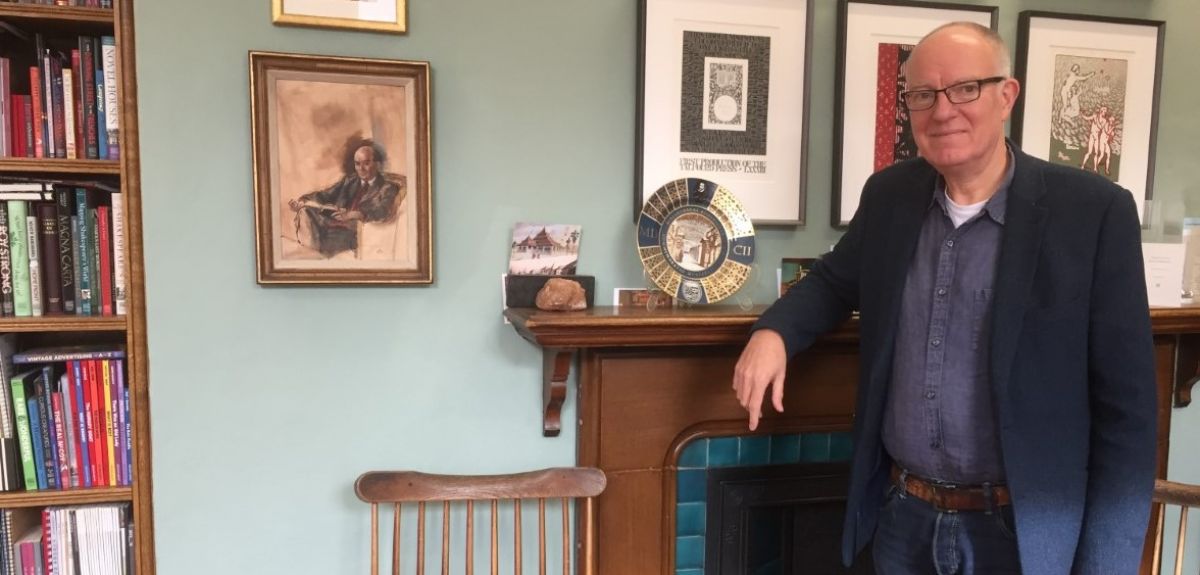

 Teaching the World’s Future Leaders
Teaching the World’s Future Leaders  A blueprint for sustainability: Building new circular battery economies to power the future
A blueprint for sustainability: Building new circular battery economies to power the future Oxford citizen science project helps improve detection of antibiotic resistance
Oxford citizen science project helps improve detection of antibiotic resistance The Oxford students at the forefront of the fight against microbial resistance
The Oxford students at the forefront of the fight against microbial resistance  The hidden cost of AI: In conversation with Professor Mark Graham
The hidden cost of AI: In conversation with Professor Mark Graham  Astrophoria Foundation Year: Dr Jo Begbie reflects on the programme’s first year
Astrophoria Foundation Year: Dr Jo Begbie reflects on the programme’s first year World Malaria Day 2024: an interview with Professor Philippe Guerin
World Malaria Day 2024: an interview with Professor Philippe Guerin From health policies to clinical practice, research on mental and brain health influences many areas of public life
From health policies to clinical practice, research on mental and brain health influences many areas of public life From research to action: How the Young Lives project is helping to protect girls from child marriage
From research to action: How the Young Lives project is helping to protect girls from child marriage